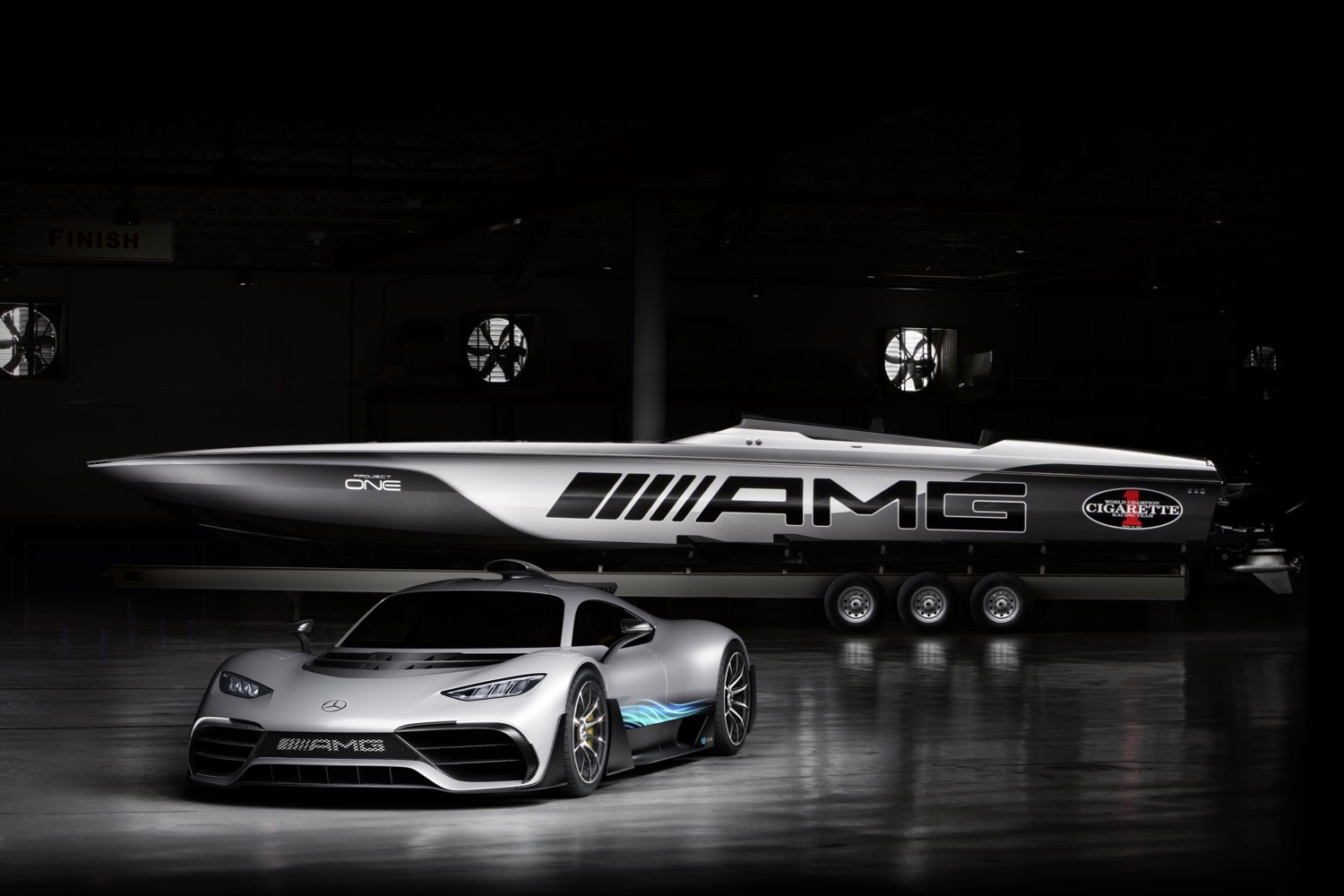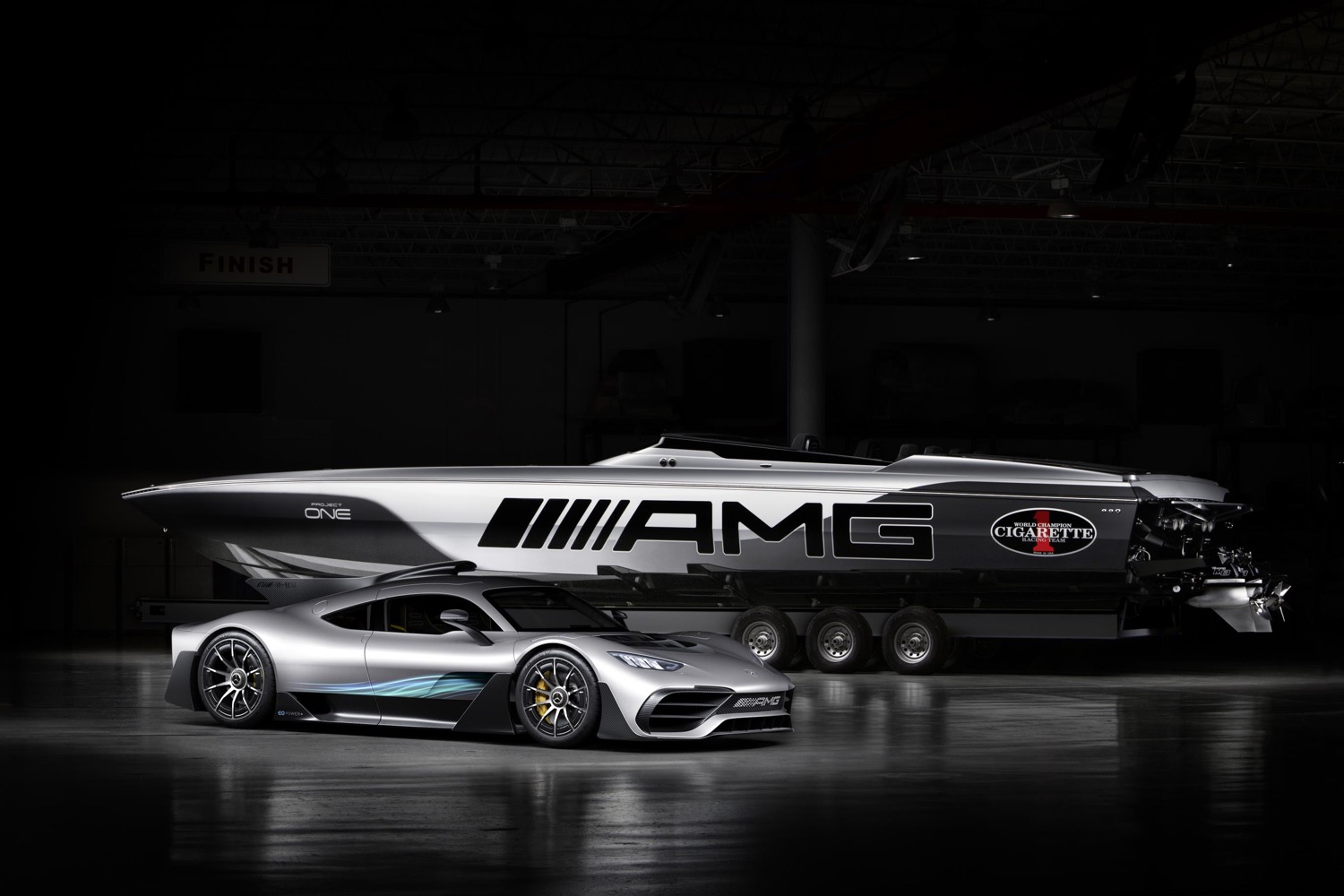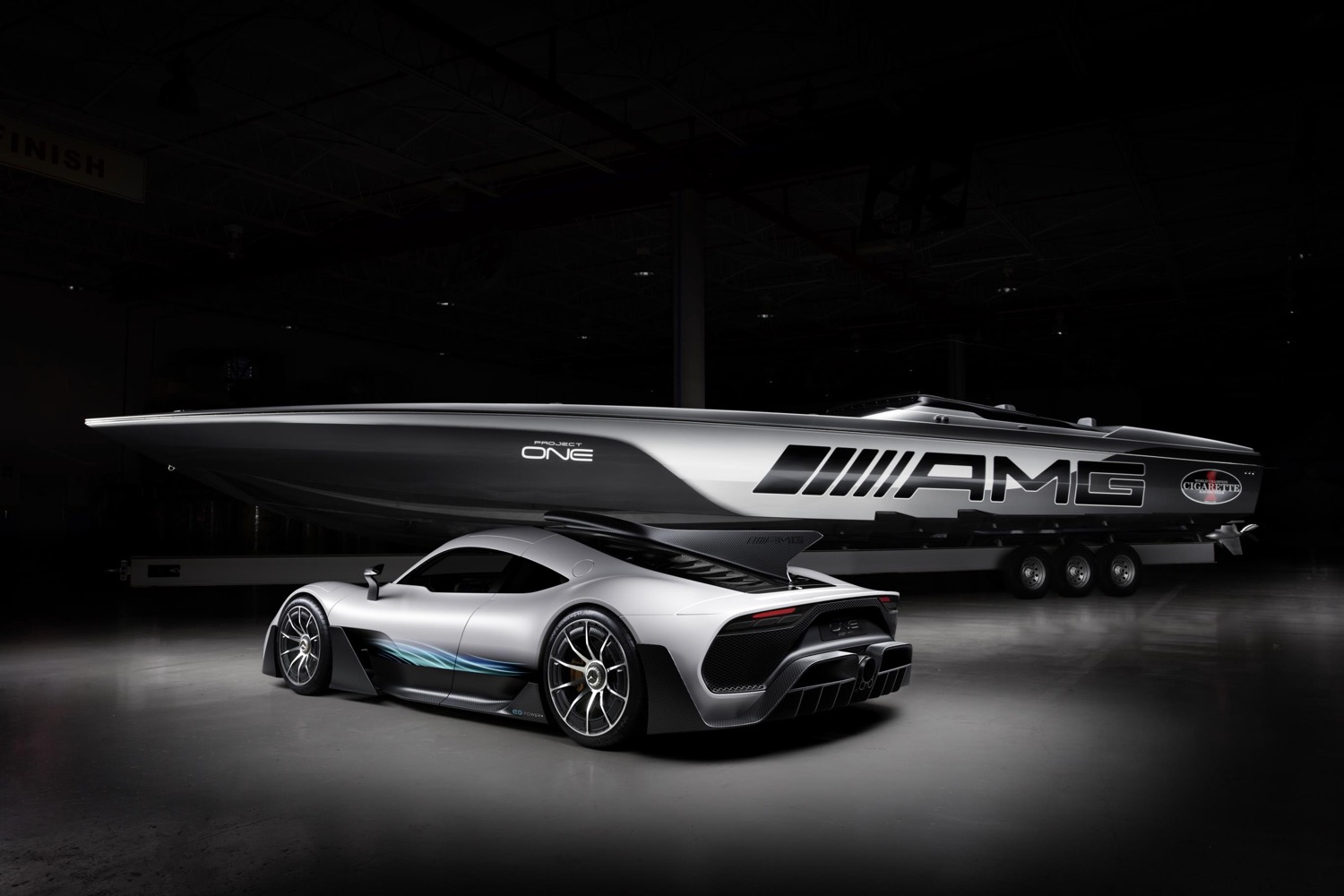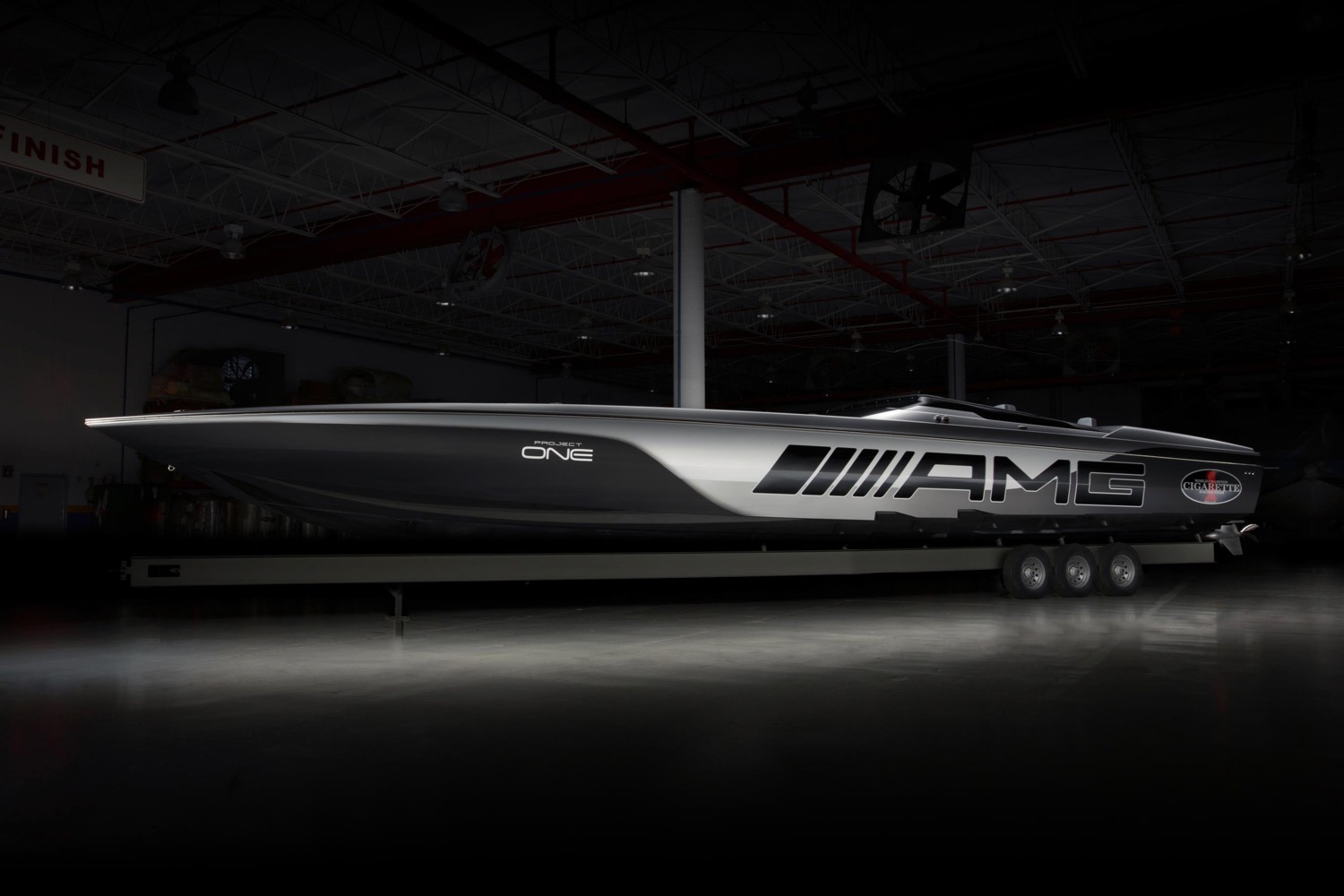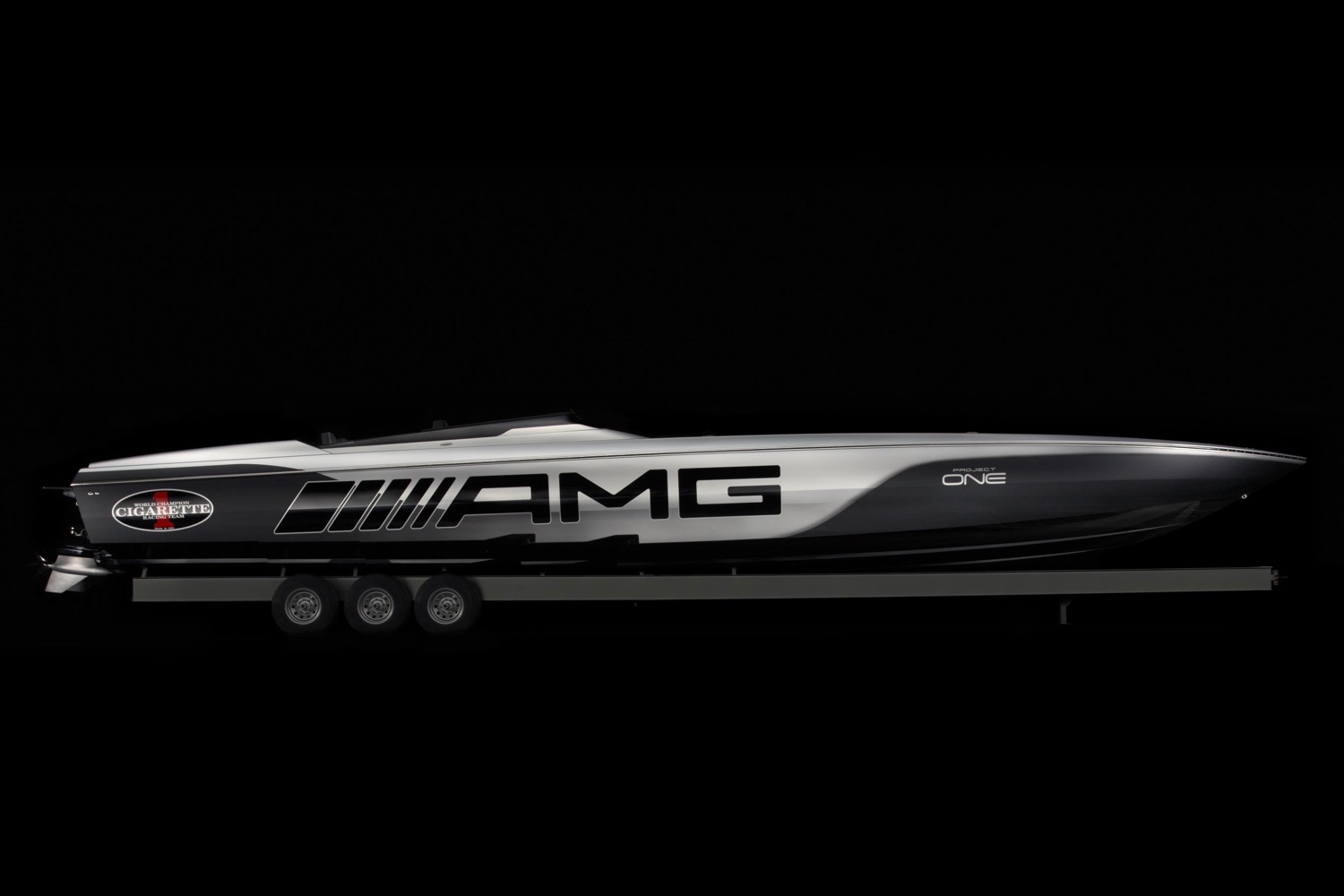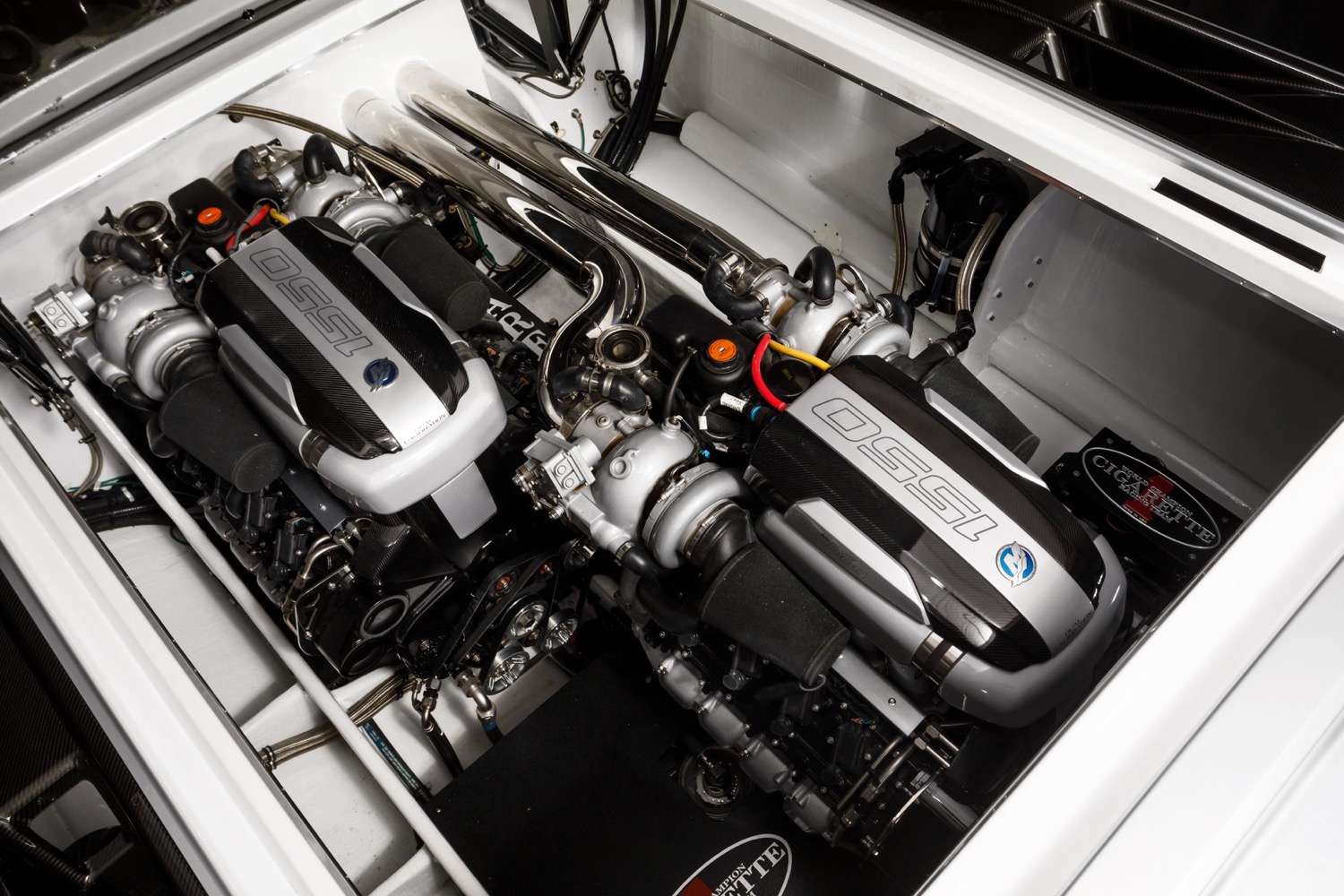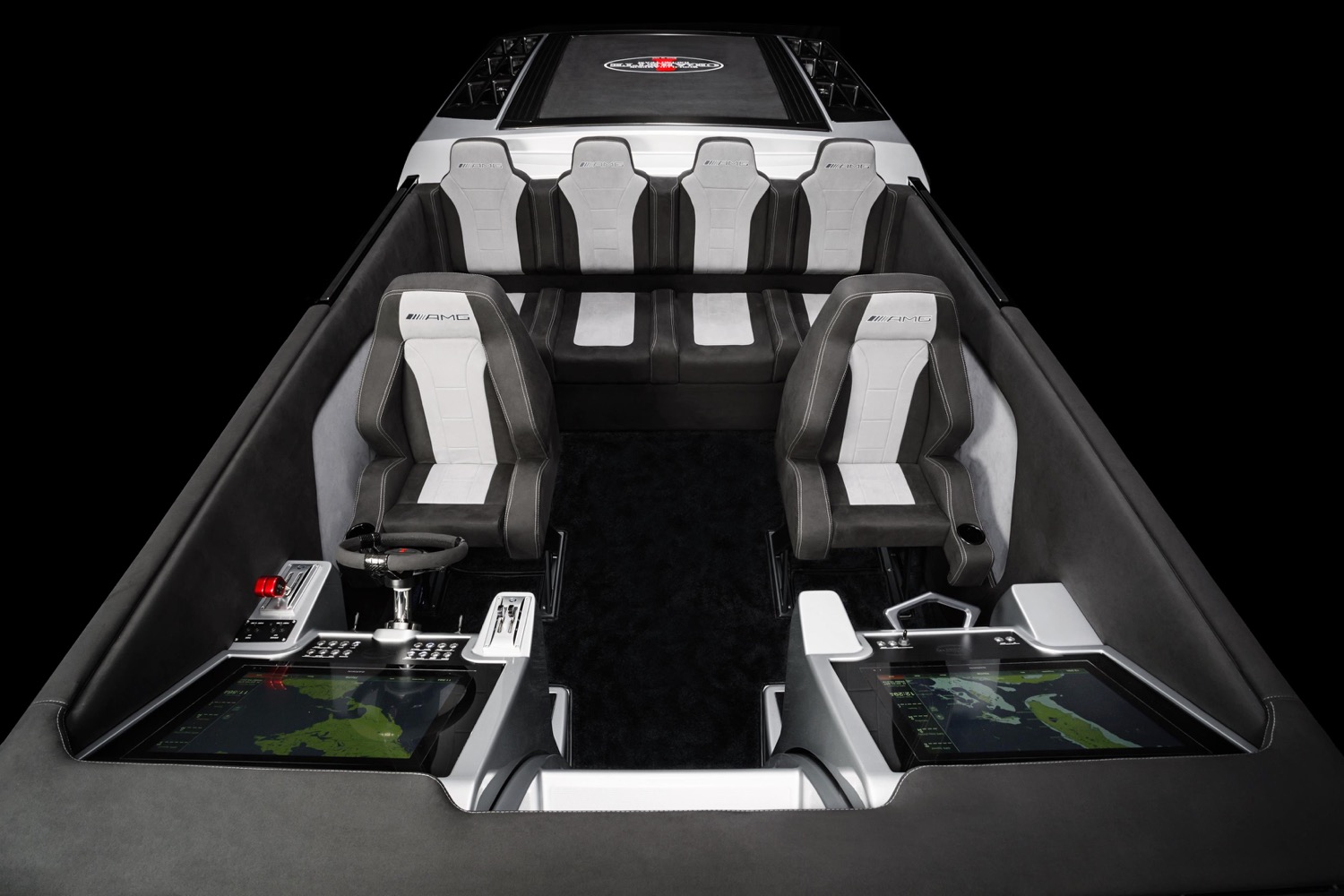Over the years, Mercedes-AMG and Cigarette Racing have collaborated on no less than eight special-edition boats inspired by AMG’s high-performance cars. So it shouldn’t be surprising that the two companies have teamed up again for a boat inspired by the most extreme AMG road car ever, the Project One.
Like many modern supercars, the Cigarette Racing 515 Project One is made from a mix of lightweight composite materials, specifically fiberglass, kevlar, and carbon fiber. At 51 feet, 5 inches long (hence the “515” designation) and 9 feet, 6 inches wide, the boat is quite a bit bigger than the average supercar, though, and provides room for at least six people.
The boat is powered by two Mercury Racing V8 engines. Each one develops 1,350 horsepower on regular 91-octane fuel, or 1,500 hp on racing fuel. All of that grunt propels the boat to a top speed of 140 mph, according to Cigarette Racing. The engines are also staggered, allowing them to be mounted closer together, which in turn lowers the boat’s center of gravity. Black-and-silver paint, AMG badging, and other design touches are meant to tie the 515 Project One to its automotive namesake.
Cigarette Racing does build a mean speedboat, but the Mercedes-AMG Project One blows it out of the water. The Project One is built around the actual hybrid powertrain from Mercedes’ championship-winning Formula One cars, and comes complete with a 1.6-liter turbocharged V6 engine that can rev to 11,000 rpm, which Mercedes claims is the highest rev limit of any road-car engine.
The V6 engine is assisted by four electric motors: one helps it drive the rear wheels, two more drive the front wheels, and a fourth spools up the turbocharger for maximum responsiveness. Mercedes claims the combination of gasoline and electric power will be good for over 1,000 horsepower, and will rocket the Project One to a top speed of over 217 mph.
Mercedes-AMG and Cigarette Racing would not disclose the price of the Project One-inspired boat, but the car is expected to sell for about $2.7 million. Only 275 of the cars will be made, and the first examples aren’t expected to begin rolling off the production line until around 2020.
